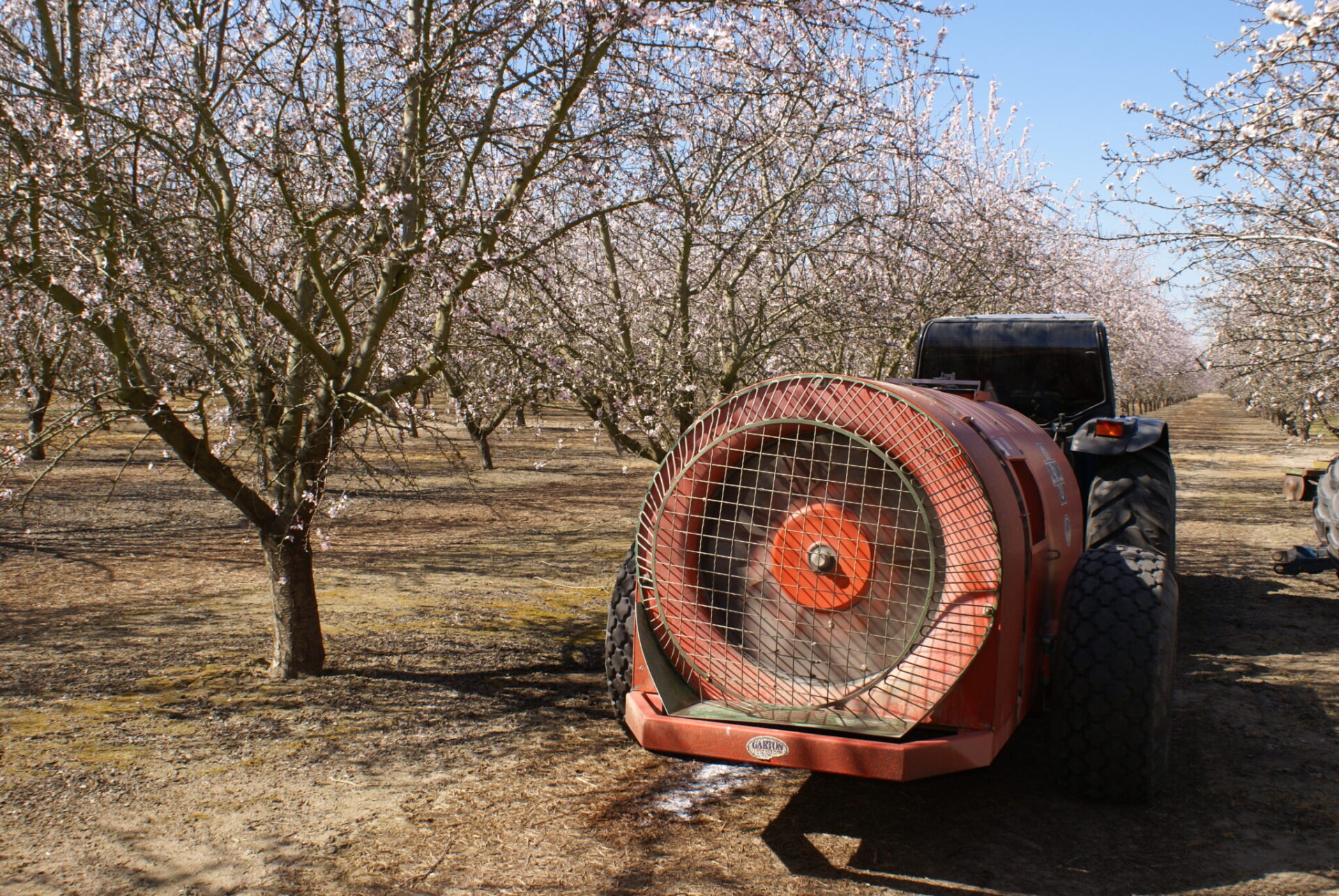
Maintenance and calibration of spray rigs in preparation for bloom sprays is always recommended, but there is also the human factor in achieving good spray efficiency.
To ensure an effective and efficient spray application, growers and operators should know how the sprayer works and if it is calibrated to deliver the desired volume and driven at the optimum ground speed.
Franz Niederholzer, UCCE farm advisor in Colusa, Sutter and Yuba counties, said sprayer maintenance, prior to the bloom spray activity, includes installing new stainless steel nozzles or checking ceramic nozzles for wear. Pump and system strainers need to be checked and cleaned or replaced if needed. He recommends pulling off all nozzles and strainers and running clean water through the system to blow out solids before calibrating and spraying.
The pressure gauge accuracy should be spot tested by checking if the sprayer flow rate (gallons per minute) matches manufacturer specifications for the open nozzles at a listed pressure. For example, if the sprayer is running 16 new D6/25 nozzles and the nozzle catalog says that each nozzle puts out 0.7 gallons per minute at 100 psi and the sprayer’s pressure gauge reads 100 psi, the sprayer flow rate should be 11.2 gallons per minute ±5% (10.6 to 11.8 gallons per minute). If not, and the strainers/filters are clear, the pressure gauge should be replaced.
Niederholzer said getting the bloom spray application right, i.e. getting coverage as uniform as possible throughout the tree canopy, requires adjusting the ground speed and spray volume to the tree at bloom. Ground speed for bloom sprays can be faster than for sprays later in the growing season as no leaves or fruit impede the spray material.
Niederholzer said that to be most effective with fungicides (and, in general, most pesticide applications), two-thirds of the spray volume should be sprayed through the top half of the open nozzles. Rain will recycle the material downward, he added.
In Sacramento Valley Walnut News, Niederholzer explained the process for checking the actual sprayer’s gallons-per-acre delivery: with the sprayer filled to overflowing, run the sprayer at field settings for two to three minutes, noting exactly how long nozzles are open. Then, refill the tank using a flow meter on a garden hose or bucket with volume markings, noting how much it takes to refill. Divide the total gallons replaced into the sprayer by minutes of run time and that will give the actual gallons per minute put out by the sprayer. To get the actual gallons per acres, divide gallons per minute by acres per minute. Acres per minute is determined by multiplying measured ground speed (feet per minute) by row width (feet) and dividing the result by 43,560 ft2 per acre. Niederholzer recommended repeating the process to make sure the intended rate per acre is delivered when the spray materials are added to the tank.
Calibration should be spot checked during the spray job by checking trees per minute and knowing the number of rows or trees per tank at the particular GPA.
















